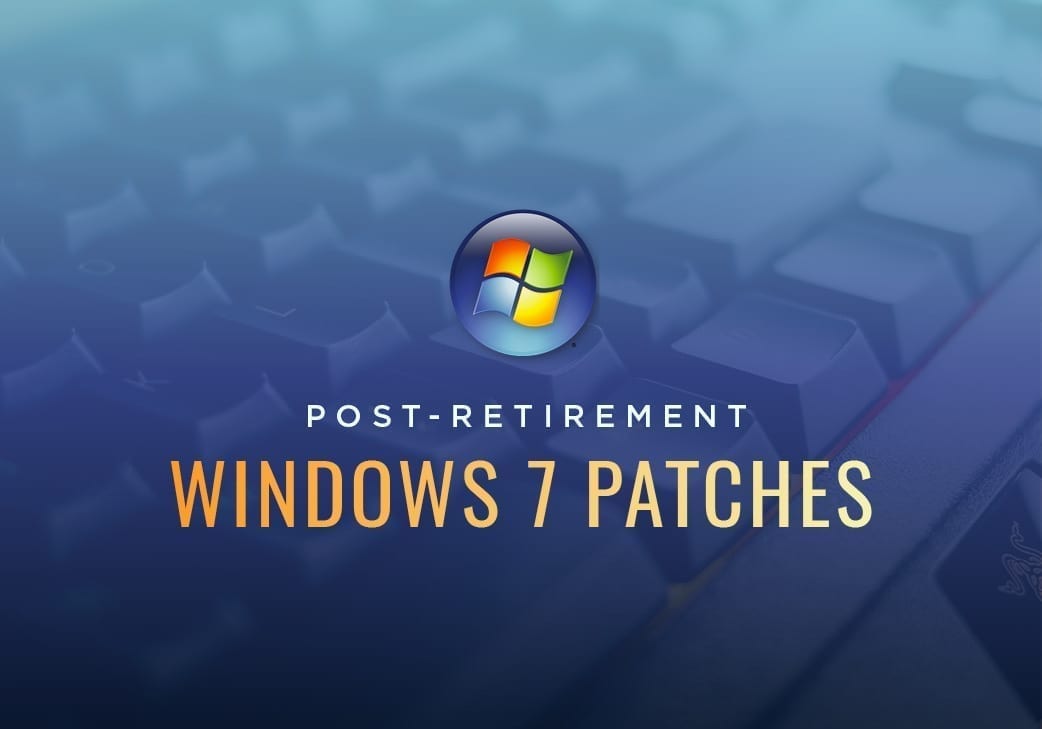
Windows 7 Post-Retirement: Patches for a Price
Microsoft is now allowing Windows 7 Extended Security Updates (ESUs) to be available to any business. The major move ensures that any business user who is unable to (or unwilling to) migrate to the newer Windows 10 can still receive security updates and support until January 2023.
Back in September 2018, Microsoft announced extended support for the aging operating system, except it was limited to only customers with volume licensing deals for Windows 7 Enterprise, as well as Windows 7 Professional. Recently, it was altered again to make it more widely available to any business simply willing to pay (commonly referred to as “patches-for-a-price”) since the deadline for support on Windows 7 is strictly coming to an end in January 2020.
“Through January 2023, we will extend the availability of paid Windows 7 Extended Security Updates (ESU) to business of all sizes,” stated Jared Spataro, Corporate Vice President for Microsoft 365. “The Windows 7 ESU will be sold on a per-device basis with the price increasing each year. Starting on December 1, 2019, businesses of any size can purchase ESU through the cloud solution provider (CSP) program. This means that customers can work with their partners to get the security they need while they make their way to Windows 10.”
How much will Windows 7 support cost?
The new pricing won’t be very cheap and will be strictly-limited to a per-device model. The pricing will also be different between Pro- and Enterprise-licenses and will indeed increase each year. Pricing of the ESUs will start from $25 per device for Windows Enterprise in year one, then up to $100 per device in year three. For Pro users, the ESU pricing starts at $50 per device in year one and up to $200 per device in year three.
In addition to exclusive and continued support for the dying operating system, Microsoft reminded all Office 365 users that Windows 7 is coming to an end and is strongly urging all to upgrade as soon as possible due to potential security risks if left unsupported. “Using Office 365 ProPlus on older, unsupported operating systems may cause performance and reliability issues over time,” stated Microsoft in late September. “Therefore, if your organization is using Office 365 ProPlus on devices running Windows 7, we strongly recommend your organization move these devices to Windows 10.”
Even though Windows 7 is now receiving extended support for security updates and fixes, Microsoft will not allow the device running Windows 7 to receive Office 365 ProPlus feature updates, limiting the license itself.
“This information applies even if you have purchased Extended Security Updates (ESU) for Windows 7…After you move Office 365 ProPlus to a supported Windows operating system, preferably Windows 10, you can configure Office 365 ProPlus to begin receiving feature updates again. Since updates for Office 365 ProPlus are cumulative, you will receive all the feature updates that you missed while the device was running Windows 7.”
It’s worth noting that although Windows 7 can still technically be used for Office 365, Microsoft didn’t release any additional details on that level of support, “We’ll be providing more information by January about how to get security updates for Office 365 ProPlus on devices running Windows 7 after support for Windows 7 ends.”
Final Thoughts
So there you have it. Windows 7 will gain extended support, if you want to pay the hefty price, but any Office 365 users (or any service for that matter) should be wary that certain aspects will not receive support after the January 2020 deadline.
The industry recommendation is to migrate all devices to Windows 10 to ensure all services won’t be affected as well as full support for quality and feature updates.




